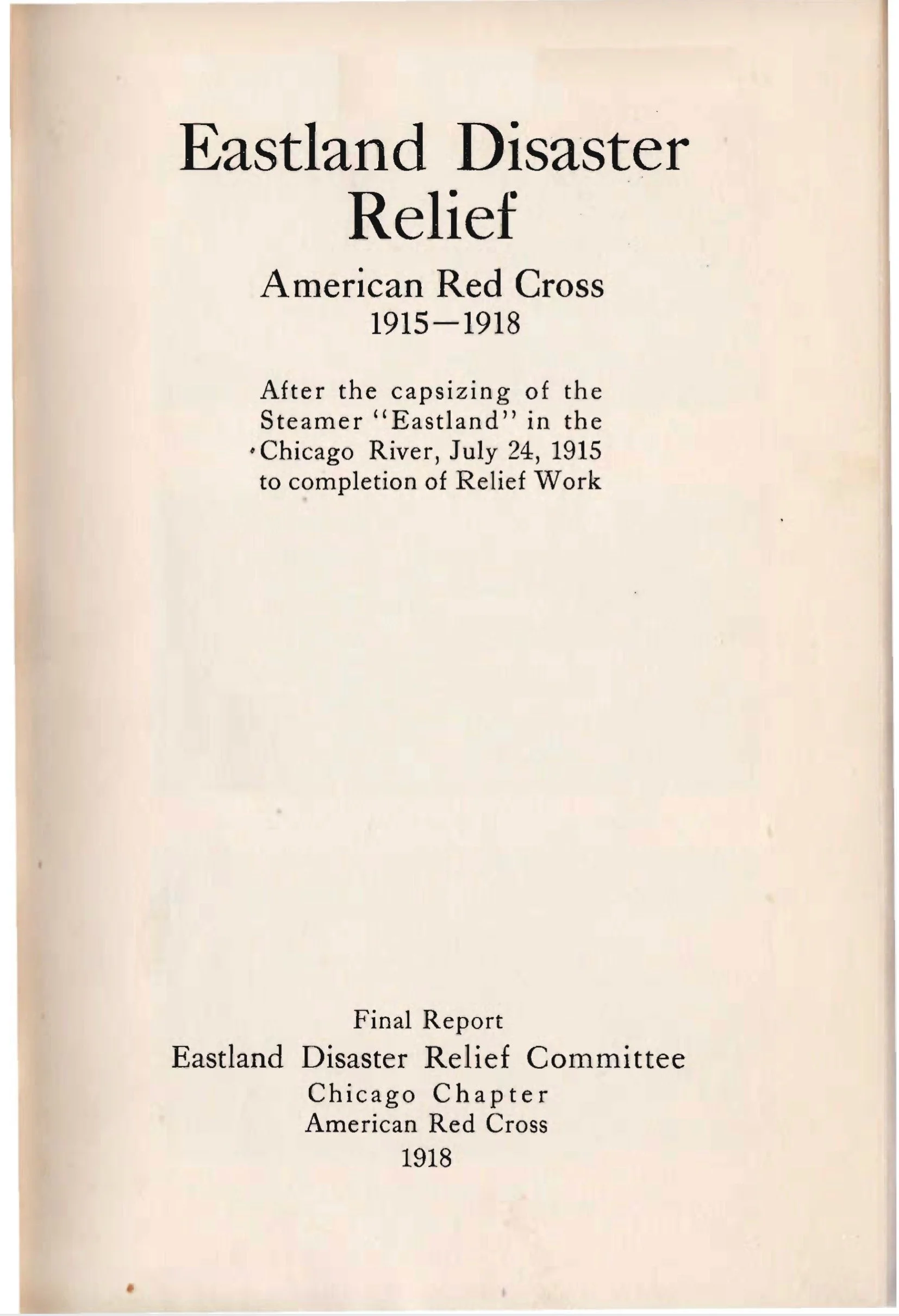Eastland Disaster Relief - American Red Cross - 1915-1918
Overview
The Eastland Disaster Relief report details the relief efforts undertaken by the Chicago Chapter of the American Red Cross following the capsizing of the Steamer Eastland in the Chicago River on July 24, 1915, which resulted in the deaths of 812 people. The relief work spanned from 1915 to 1918.
Contents
Foreword: Acknowledges the contributions of Chicago citizens, businesses, and various organizations in the relief efforts.
The Disaster: Describes the events of the capsizing, the immediate response, and the chaos that ensued.
Relief Work at the Scene: Outlines the initial rescue operations and the involvement of various organizations and individuals in providing immediate assistance.
Emergency Relief: Details the immediate financial assistance and support provided to the families affected by the disaster.
Distribution of Relief Fund: Explains the methodology used to distribute the funds to the victims’ families, including the criteria for determining the amounts.
Western Electric Company Relief: Describes the additional relief efforts and funds provided by the Western Electric Company, whose employees were significantly affected.
Administrative Expenses: Reports on the costs incurred in managing the relief operations, highlighting the efficiency and minimal overheads.
Case Reports: Presents detailed accounts of various families affected by the disaster, categorized into groups based on their circumstances (e.g., widows with children, children alone, etc.).
Key Points
Relief Fund: A total of $385,979.78 was raised by the Chicago Chapter, with additional contributions from the Western Electric Company, totaling $562,370.39.
Distribution Method: The funds were distributed based on a detailed assessment of each family's needs, considering factors like the number of dependents, insurance, and real estate holdings.
Collaborative Effort: The relief work involved cooperation from multiple social service agencies, businesses, and volunteers, ensuring a comprehensive and effective response.
Sustainability: Efforts were made to ensure that the financial support provided to families was sustainable, preventing them from becoming dependent on charity in the long term.
Notable Contributions
Western Electric Company: Provided substantial financial aid and other forms of assistance to its affected employees and their families.
Social Service Agencies: Played a crucial role in the relief efforts, offering trained personnel and resources.
Community and Businesses: Contributed generously in terms of money, goods, and services, significantly aiding the relief operations.
Conclusion
The report concludes by emphasizing the successful collaboration and efficient management of the relief efforts, which prevented many families from falling into poverty and ensured that the victims were supported adequately.

